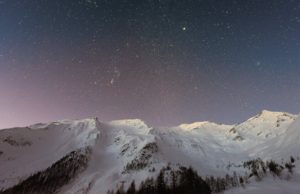Dust may be a substantial factor aiding the snowmelt in the Himalayas. The term albedo denotes reflection strength. Pure white snow, with high reflection, has a high albedo. Dirty snow, with lower reflection, has a low albedo.

Greenhouse gases induced global warming is already an established cause for melting snow-caps. However, dust may be a substantial factor aiding the snow-melt in the Himalayas, a new study finds.
According to a study published in Nature Climate Change, dust blowing on top of the snow-clad Himalayan mountains could be expediting the speed of snow melting. It’s because dust can absorb sunlight, subsequently heating up the surrounding area. Also, it’s not the garden-variety amount of dust that barely manages to make you sneeze. There’s a lot of it, large enough amount to heat snow.
Yun Qian, an atmospheric scientist from US and Chandan Sarangi, from Indian Institute of Technology Madras co-authored the study. “It turns out that dust blowing hundreds of miles from parts of Africa and Asia and landing at very high elevations has a broad impact on the snow cycle in a region that is home to one of the largest masses of snow and ice on Earth,” Qian was quoted by Phys.org.

While rapidly melting polar snow caps are a matter of concern, regular snow melting is also part of natural ecology. Glaciers, which feed into freshwater rivers, are resultant of normal snowmelt procedure. It is estimated that nearly 700 million people of Southeast Asia are dependent on Himalayan snow for their freshwater needs.
Major rivers in India and China including Ganga, Brahmaputra, Yangtze, and Huang He are absolutely essential for life, agriculture, ecology and so on, originate in the Himalayas. Therefore, studies like these are important to analyse why the snowmelt is earlier in these regions. The answer is dust.
A former study conducted by NASA measured elevation, aerosols and surface features like presence of dust/pollution on snow. The phenomenon these particles result in is called the Albedo Effect. Darker objects absorb more sunlight. Which is why people prefer to paint their cars white in hotter climates as white reflects the sunlight at a far greater strength than a colour like black.

Similarly, pure white snow reflects away all the sunlight that falls on it. But with the presence of dust and other darker pollutants, the reflection is much lowered. These particles absorb the light, and subsequently, the heat from rays of the sun.
The term albedo denotes reflection strength. Pure white snow, with high reflection, has a high albedo. Dirty snow, with lower reflection, has a low albedo.
Changing urban landscapes have increased the amount of dust being blown onto the Himalayas. Deforestation, agriculture, large-scale industrial construction- the sources of dust are endless. This dust aiding faster snowmelt will result in snow exhaustion – eventually – freshwater exhaustion.
The researcher urge there is an urgent need for further study so actions can be taken accordingly.


One Response
Thanks for this valuable information.